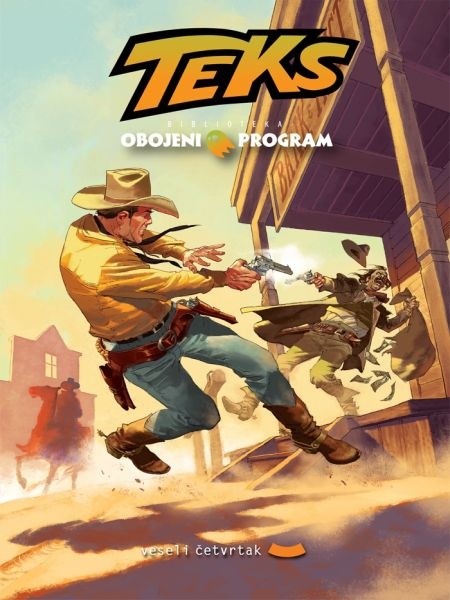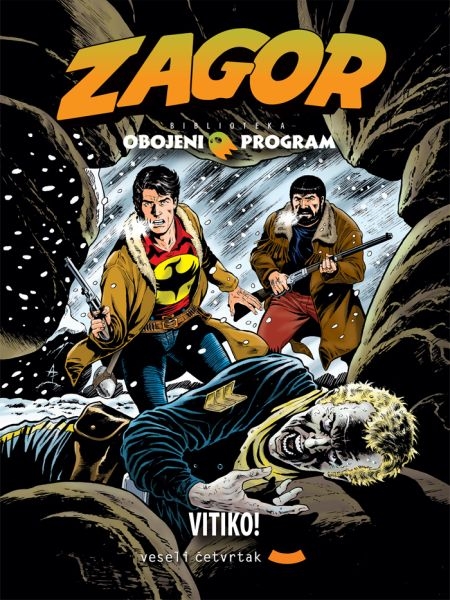
Part of Series
Authors

Charles "Chuck" Dixon is an American comic book writer, perhaps best-known for long runs on Batman titles in the 1990s. His earliest comics work was writing Evangeline first for Comico Comics in 1984 (then later for First Comics, who published the on-going series), on which he worked with his then-wife, the artist Judith Hunt. His big break came one year later, when editor Larry Hama hired him to write back-up stories for Marvel Comics' The Savage Sword of Conan. In 1986, he began working for Eclipse Comics, writing Airboy with artist Tim Truman. Continuing to write for both Marvel and (mainly) Eclipse on these titles, as well as launching Strike! with artist Tom Lyle in August 1987 and Valkyrie with artist Paul Gulacy in October 1987, he began work on Carl Potts' Alien Legion series for Marvel's Epic Comics imprint, under editor Archie Goodwin. He also produced a three-issue adaptation of J. R. R. Tolkien's The Hobbit for Eclipse with artist David Wenzel between 1989 and 1990, and began writing Marc Spector: Moon Knight in June 1989. His Punisher OGN Kingdom Gone (August, 1990) led to him working on the monthly The Punisher War Journal (and later, more monthly and occasional Punisher titles), and also brought him to the attention of DC Comics editor Denny O'Neil, who asked him to produce a Robin mini-series. The mini proved popular enough to spawn two sequels - The Joker's Wild (1991) and Cry of the Huntress (1992) - which led to both an ongoing monthly series (which Dixon wrote for 100 issues before leaving to work with CrossGen Comics), and to Dixon working on Detective Comics from #644-738 through the major Batman stories KnightFall & KnightsEnd (for which he helped create the key character of Bane), DC One Million, Contagion, Legacy, Cataclysm and No Man's Land . Much of his run was illustrated by Graham Nolan. He was DC's most prolific Batman-writer in the mid-1990s (rivalled perhaps in history by Bill Finger and Dennis O'Neil) - in addition to writing Detective Comics he pioneered the individual series for Robin, Nightwing (which he wrote for 70 issues, and returned to briefly with 2005's #101) and Batgirl, as well as creating the team and book Birds of Prey . While writing multiple Punisher and Batman comics (and October 1994's Punisher/Batman crossover), he also found time to launch Team 7 for Jim Lee's WildStorm/Image and Prophet for Rob Liefeld's Extreme Studios. He also wrote many issues of Catwoman and Green Arrow, regularly having about seven titles out each and every month between the years 1993 and 1998. In March, 2002, Dixon turned his attention to CrossGen's output, salthough he co-wrote with Scott Beatty the origin of Barbara Gordon's Batgirl in 2003's Batgirl: Year One. For CrossGen he took over some of the comics of the out-going Mark Waid, taking over Sigil from #21, and Crux with #13. He launched Way of the Rat in June 2002, Brath (March '03), The Silken Ghost (June '03) and the pirate comic El Cazador (Oct '03), as well as editing Robert Rodi's non-Sigilverse The Crossovers. He also wrote the Ruse spin-off Archard's Agents one-shots in January and November '03 and April '04, the last released shortly before CrossGen's complete collapse forced the cancellation of all of its comics, before which Dixon wrote a single issue of Sojourn (May '04). Dixon's Way of the Rat #24, Brath #14 and El Cazador #6 were among the last comics released from the then-bankrupt publisher. On June 10, 2008, Dixon announced on his forum that he was no longer "employed by DC Comics in any capacity."

Gualdoni frequenta il Liceo Artistico di Busto Arsizio e la Scuola d'Arte del Castello Sforzesco di Milano. Nel 2000 è chiamato da Gabriele Clima, direttore artistico di Mediacomics, a prendere parte alla creazione di Armadel, il primo iperfumetto al mondo, ovvero un webcomics con collegamenti multimediali per testo e immagini. Oltre al gioco online legato a questo personaggio, Gualdoni scrive, in team con altri sceneggiatori, i primi 2 episodi intitolati Il respiro delle Stelle e Il re dei topi Nel 2001 dà vita al Settemondi Studio, gruppo di fumettisti e non solo, finalizzato alla creazione e alla promozione di progetti originali di serie a fumetti. Agli inizi del 2002 produce per la Francia per conto di Soleil Production la serie Akameshi, un fantasy che si svolge nel Giappone dell'era Edo, la cui realizzazione grafica è affidata a Stefano Turconi. Parallelamente, assieme a Matteo Piana e Davide Turotti, inizia il lavoro sulla saga L'Anello dei 7 Mondi (di cui sono usciti finora tre dei quattro volumi previsti), pubblicato da Les Humanoïdes Associés, e poco dopo Starlight, una serie di fantascienza comica ambientata in un futuro che si rifà nel designer allo stile pop anni settanta (con i disegni di Alberto Ponticelli e i colori di Davide Turotti). Tutte queste serie sono state ripubblicate anche in Italia dalle Edizioni BD. Dopo Starlight, Gualdoni produce Fantaghenna e Teknogeo, due altre serie per l’editrice francese Paquet, co-sceneggiate con Giustina Porcelli e disegnate rispettivamente da Stefano Turconi e Gianfranco Enrietto. Queste serie sono state pubblicate a puntate anche in Italia sul magazine Brand New! edito da Free Books. Nel 2010 Fantaghenna è stato poi ristampato in albo cartonato dalla stessa Free Books. Il progetto più importante di Gualdoni è Wondercity, Il Collegio delle Meraviglie, una serie realizzata da uno staff che riunisce alcuni tra i migliori autori della Walt Disney Italia e i coloristi dello Studio Tenderini. Il lavoro è stato pubblicato a livello internazionale, Italia compresa, dalle edizioni Free Books in uscite bimestrali. Sempre da un’idea di Giovanni Gualdoni nel 2006 viene realizzata la serie Dr. Voodoo, con matite e pennelli di Luigi Cavenago, sempre per le edizioni Free Books. Lo stesso anno Gualdoni firma la sceneggiatura dell’episodio 47 della serie John Doe, intitolato Cosa sarebbe successo se.... Dalla fine del 2006 Gualdoni lavora come redattore per Sergio Bonelli Editore, per il quale ha realizzato diversi episodi di Dylan Dog tra cui alcuni per la nuova collana Dylan Dog Color Fest. Nel 2007 una collaborazione tra Gualdoni e lo sceneggiatore Marco Belli ha portato alla realizzazione della saga in due volumi L'Ultima notte, su disegni di Werner Maresta e colori di Donatella Melchionno. Nel 2008 Gualdoni e Chiara Caccivio hanno pubblicato il loro primo libro di letteratura per ragazzi, Rumbler, Il segreto del Qwid, edito da De Agostini. Da gennaio del 2010 fino al maggio 2013 Gualdoni sostituisce Mauro Marcheselli come nuovo curatore di Dylan Dog, ruolo poi assunto a partire da settembre 2013 da Roberto Recchioni.



